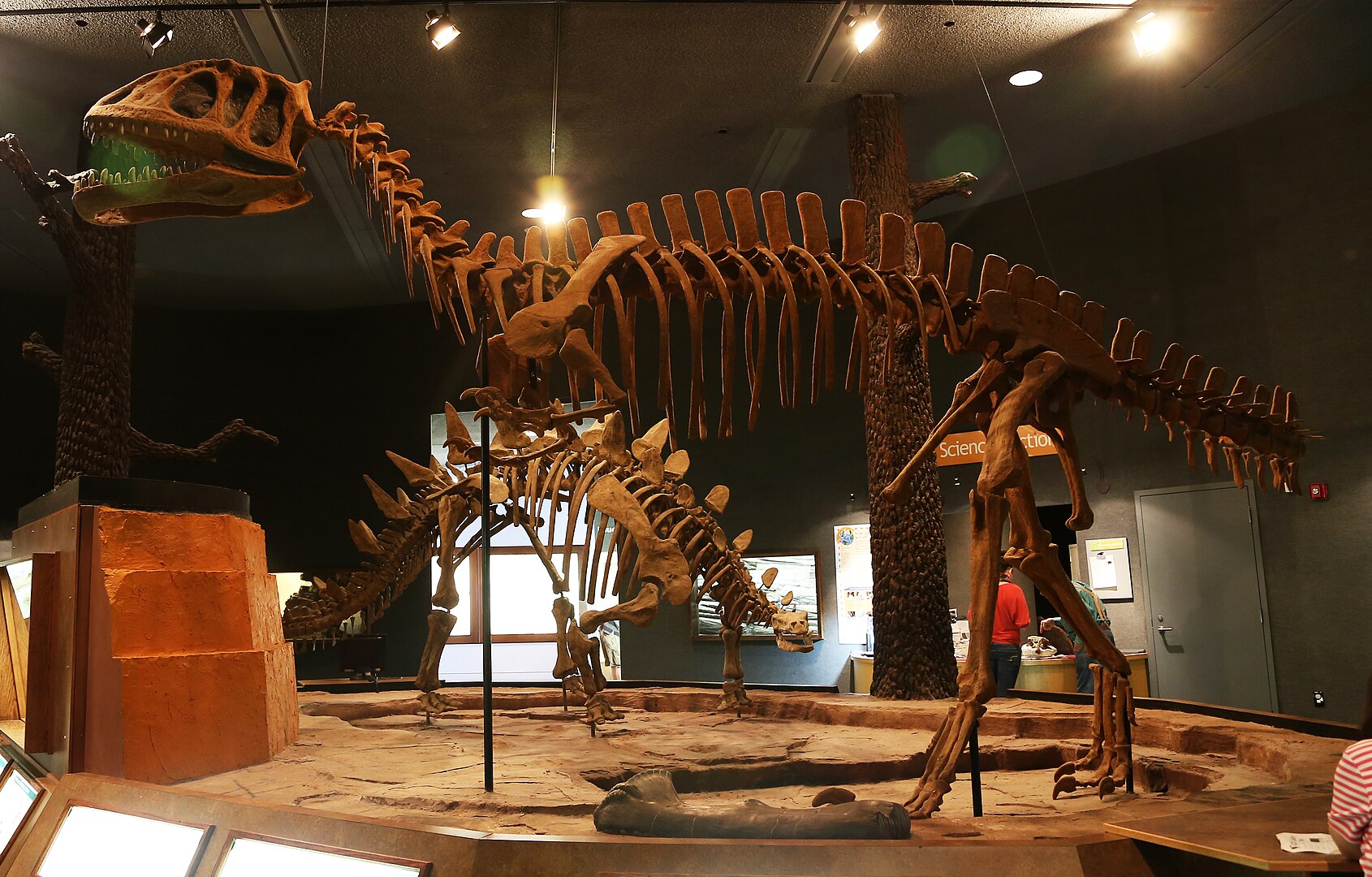Yangchuanosaurus: The Apex Predator of Jurassic China
Introduction
Yangchuanosaurus, a lesser-known but formidable predator, roamed the lush landscapes of what is now China during the Late Jurassic period, approximately 163 to 157 million years ago. This theropod dinosaur, named after the Yangchuan district in Sichuan Province where its fossils were first discovered, offers a fascinating glimpse into the prehistoric ecosystems of the Jurassic era. With its imposing size, sharp teeth, and keen hunting instincts, Yangchuanosaurus was a dominant force in its environment, a testament to the diversity and complexity of dinosaur life in ancient Asia.

Size comparison of the Asian allosauroid Yangchuanosaurus. Based on skeletals by SpinoInWonderland (User:Sauropodomorph).
Physical Characteristics
Yangchuanosaurus was a large carnivorous dinosaur, belonging to the Metriacanthosauridae family, a group of theropods closely related to Allosaurus. It could grow up to 10 meters (about 33 feet) in length and weigh up to 3.4 tons, making it one of the top predators in its habitat. This theropod had a robust build with a massive skull, strong jaws, and sharp, serrated teeth, perfectly adapted for slicing through the flesh of its prey. Its powerful hind limbs suggest it was a capable runner, while its shorter forelimbs, equipped with three sharp claws, were likely used for grasping and holding onto its prey.
Natural History and Discovery
The first fossils of Yangchuanosaurus were unearthed in the late 1970s in the Dashanpu Formation, a rich fossil site in Sichuan Province. These fossils, including a nearly complete skull and skeleton, were crucial in helping paleontologists understand the dinosaur’s anatomy and place it within the broader family tree of theropods. The discovery of additional specimens over the years has provided further insight into its size variation, growth patterns, and potential sexual dimorphism, although much about its biology remains speculative.

Life reconstruction of Yangchuanosaurus shangyouensis by Nobu Tamura - http://spinops.blogspot.com/
Biosphere and Habitat
Yangchuanosaurus lived during the Late Jurassic period, a time when the supercontinent Pangaea was breaking apart, creating new landmasses and altering global climates. The region that is now China was part of the eastern Laurasian landmass, characterized by a warm and humid climate with vast floodplains, rivers, and lush vegetation. The Dashanpu Formation, where Yangchuanosaurus fossils were found, indicates a diverse ecosystem with an abundance of plant and animal life, including coniferous forests, ferns, cycads, and ginkgos. This environment provided ample resources to support large herbivorous dinosaurs, which in turn sustained apex predators like Yangchuanosaurus.
Diet and Hunting Behavior
As an apex predator, Yangchuanosaurus primarily fed on large herbivorous dinosaurs that shared its environment. Its diet likely included stegosaurs, such as Tuojiangosaurus, and sauropods, such as Mamenchisaurus, both of which were abundant in the region. The sharp, serrated teeth of Yangchuanosaurus were ideal for tearing flesh, suggesting that it was a hunter rather than a scavenger. Its powerful legs indicate it was capable of running down prey, and it may have used ambush tactics to surprise slower-moving herbivores. Some paleontologists speculate that Yangchuanosaurus may have hunted in packs, although there is no direct evidence to support this behavior.main a key piece of the puzzle in understanding the prehistoric world.

by Jonathan Chen
Coexistence with Other Dinosaurs
Yangchuanosaurus shared its environment with a variety of other dinosaurs, creating a dynamic and competitive ecosystem. Among its contemporaries were several herbivorous dinosaurs, including:
- Tuojiangosaurus: A stegosaur known for its double row of bony plates along its back and spiked tail, which it likely used for defense against predators like Yangchuanosaurus.
- Mamenchisaurus: A massive sauropod with an extraordinarily long neck, making it one of the most distinctive dinosaurs of its time. Its size would have made it a challenging but rewarding target for a predator.
- Shunosaurus: Another sauropod, albeit smaller than Mamenchisaurus, with a club-like tail used for defense.
In addition to these herbivores, Yangchuanosaurus may have competed with other theropods, including smaller carnivores that preyed on different niches within the ecosystem.

Life reconstruction of Yangchuanosaurus shangyouensis by Nobu Tamura - http://spinops.blogspot.com/
In Summary
Yangchuanosaurus stands as a testament to the incredible diversity of dinosaur life during the Late Jurassic period. As a top predator in its ecosystem, it played a crucial role in maintaining the balance of species in its environment. The discovery of Yangchuanosaurus and the continued study of its fossils provide valuable insights into the complex web of life that existed millions of years ago in what is now China. As paleontologists continue to uncover more fossils and refine their understanding of this magnificent creature, angchuanosaurus will remain a key piece of the puzzle in understanding the prehistoric world.
Featured image credit:
Yanchuanosaurus life construction by Dmitri Bogdanov
Editor’s Note:
I use Open AI’s Chat GPT to write Species Profiles. Read more about this and get a copy of the prompt I’ve created here.
editor's pick
latest video
news via inbox
Nulla turp dis cursus. Integer liberos euismod pretium faucibua



